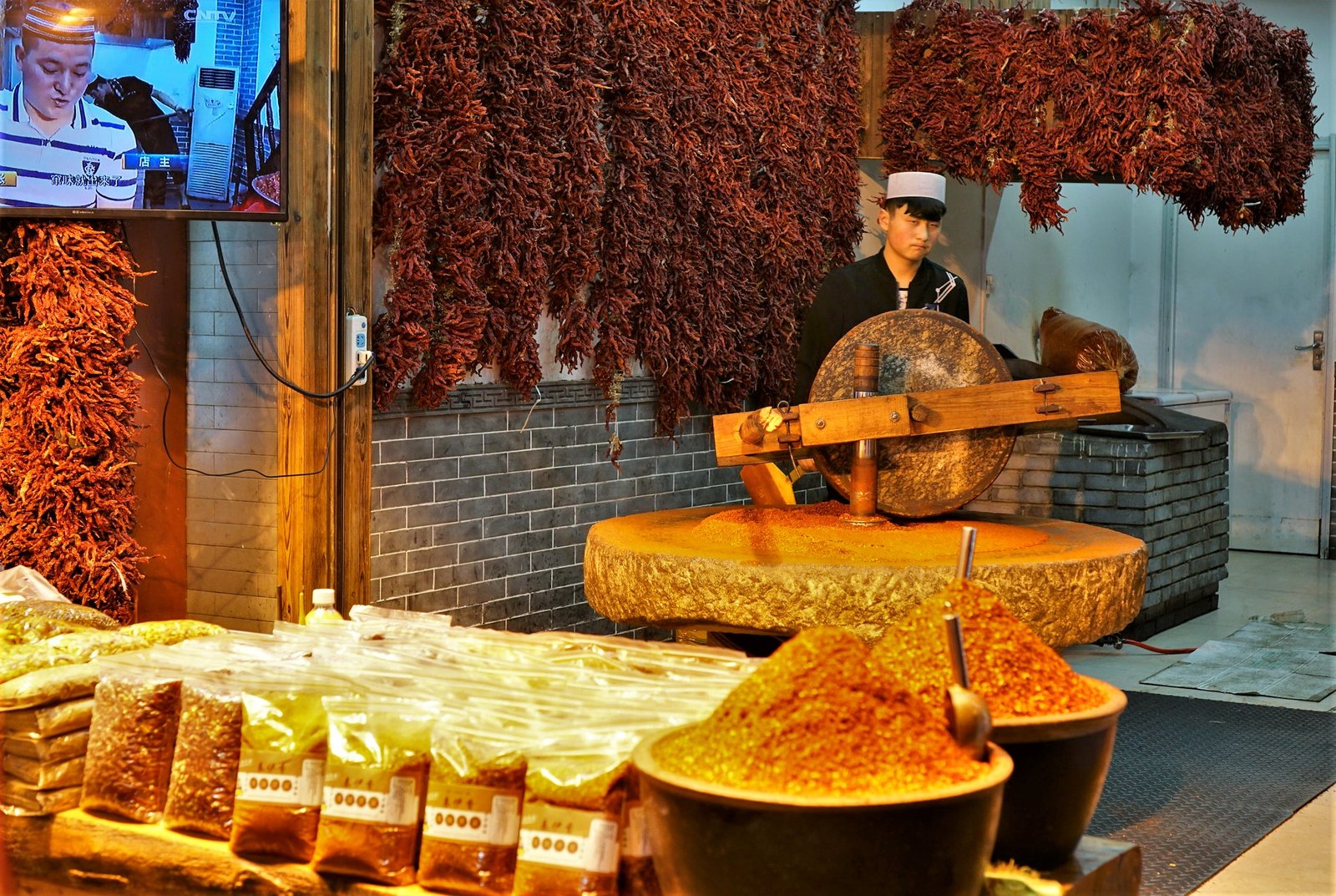On our first day in Beijing, we woke up at 5 am in our hotel room, jet-lagged from the long flight and starving. I tried to fall back asleep and wake up at a more reasonable hour, but the growling from my stomach was too loud to ignore.
“Do you think we could get breakfast anywhere now?” whispered Victor. “Would anything be open?”
I looked at my phone, but it was useless. China’s “Great Firewall” blocked all Western apps such as Google Maps or Yelp, and it was impossible to look up any open restaurants in the vicinity.
“I’ll go quickly run outside and check it out,” I said, despite being confident in the fact that absolutely everything would be closed this early in the morning.
I put on some clothes and went outside into the hotel courtyard. Our room was on the ground floor, facing a small overgrown garden with arched gates and red pillars. Squinting at the early morning sun and rubbing the sleep out of my eyes, I walked through the courtyard and pushed the heavy wooden gate with my shoulder. The gate swung open slowly, revealing a pedestrian street lined with shops, window displays, and colorful storefront signs.
Each way up and down the street, there were vendor carts outside each small restaurant, with clouds of steaming smoke coming from grills and boiling pots. Heavenly smells of fresh dumplings, fried dough, and marinating vegetables hit my nose and made my stomach growl even louder. I ran back inside.
“Hurry! Get up!” I yelled at Victor, forgetting to keep my voice down for others sleeping in adjoining rooms, “There is food! There is food everywhere!”
And for the next nine days of our travels through China, this turned out to be constantly and completely true – there was food, there was food everywhere, at any time of day or night, deep fried, steamed, baked, or stir-fried, delicious, fresh, and glorious food. Our stomachs never growled again.


But that immense abundance of food came with its unique set of challenges. First of all, barely anyone spoke English, even in the large cities we visited, and, as I mentioned before, Google services including Google Translate were unreachable. Some larger restaurants had English menus, but smaller places didn’t seem to have menus at all! This made ordering every meal a lottery/scavenger hunt affair. First, we would visually explore the offerings, check out what’s on the grill, try to peek into boiling pots, and look at what other patrons are ordering in steaming baskets. Then came the ordering, which consisted of pointing at the food (either being cooked in plain view inside or outside the restaurant or on the plate of a customer at another table) and holding up fingers to correspond to the number of servings. Before the food was served, we passed the time guessing what the dumplings would be filled with and what flavor that broth might be and did we order something savory or sweet. Back then, in 2017, Victor was not a pescatarian yet, which made it easy to order random dumplings with “surprise” fillings. The result was often unexpected and constantly delicious.
My favorite places to explore food in China were the markets, where all the food and snacks are on display in unending lines of restaurants and food stalls. One of the most impressive markets we visited was in the Muslim Quarter in Xi’an. The Muslim Quarter is populated by Hui ethnic people whose traditional diet leans heavily on beef and mutton, on skewers, in stew, in dumplings, and in every way possible. A Chinese food market is not just where you go to dine, but also to watch a show. Young men stretching three feet of noodles by hand, an entire family from an elderly grandmother to a young teenager chopping sesame candy on a large stone tabletop, two workers pounding peanuts into paste with wooden mallets on top of a barrel, pomegranates being juiced by a large metal contraption, fire dancing underneath giant metal woks, there is enough entertainment to last a whole evening.
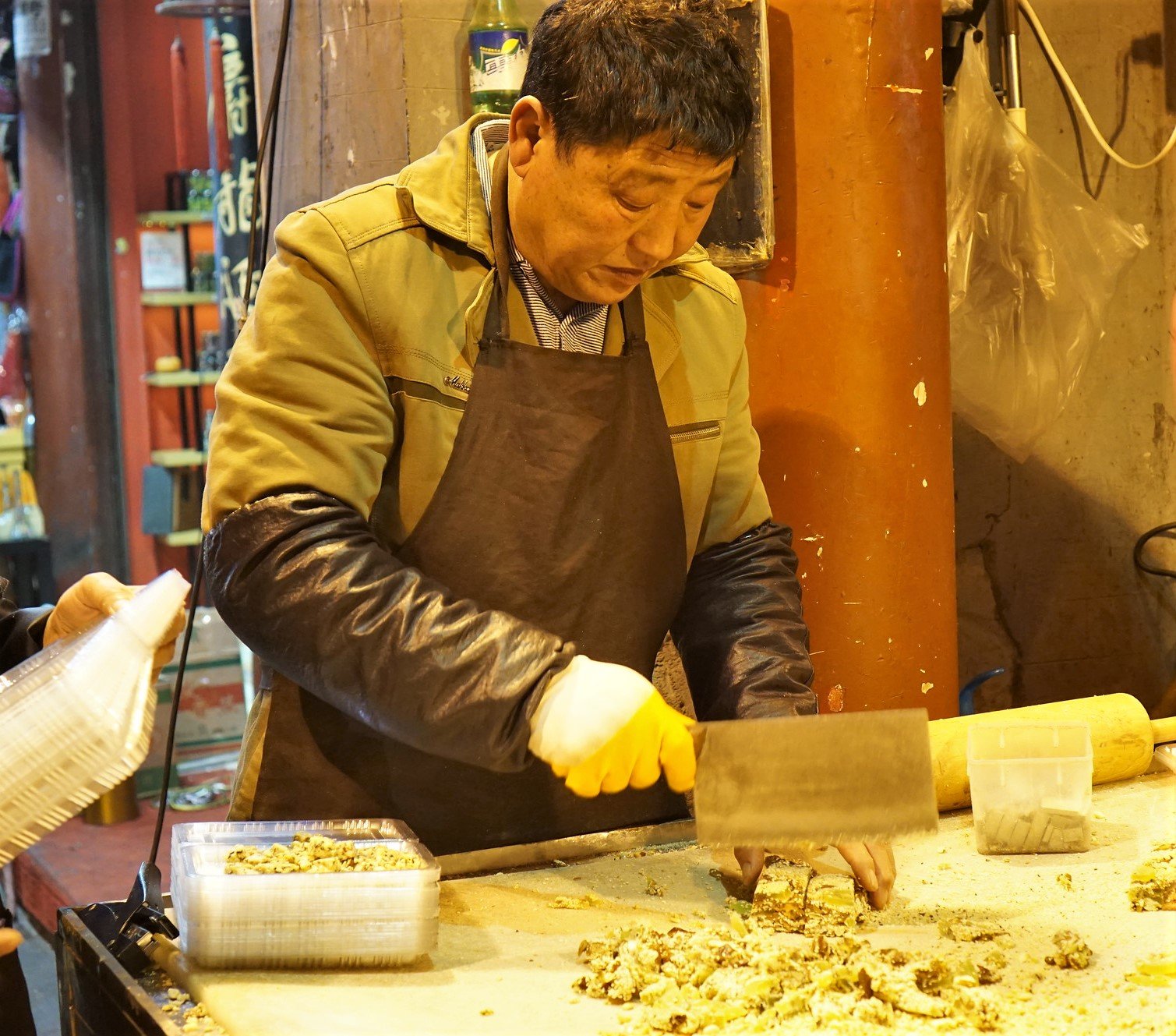
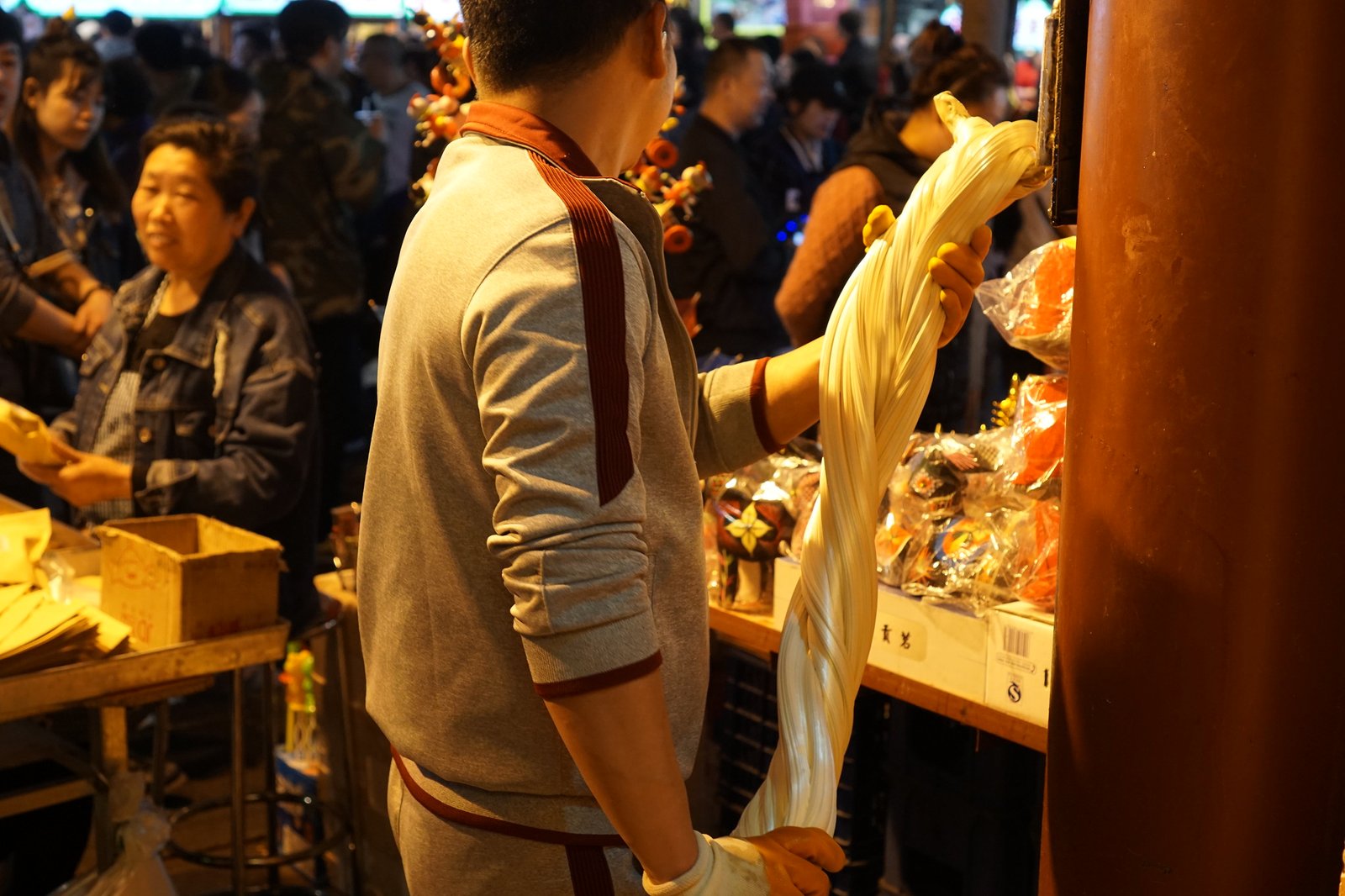
We snacked on Rou Bing (round bread pastry with meat filling), Tie Ban Xiang La Dou Fu (grilled aromatic tofu with soy, cumin, aniseed, and plenty of chilies), Guan Tang Bao (giant soup-filled dumplings), and for dessert Gui Hua Gao (bright yellow osmanthus rice cake served on a skewer). Everything was delicious. I was a little surprised that absolutely none of the food looked like anything we ever saw on the standard Chinese take-out menu back at home. I knew that real Chinese food was nothing like the Americanized version, but I didn’t expect that I wouldn’t be able to find something that looked even a little familiar.
(As I write this now, I realize that since 2017 I have seen a lot more authentic Chinese dishes served in the U.S., such as soup dumplings and grilled tofu, but at the time I haven’t seen much around here beyond General Tso’s chicken, crab rangoons, and egg-drop soup.)
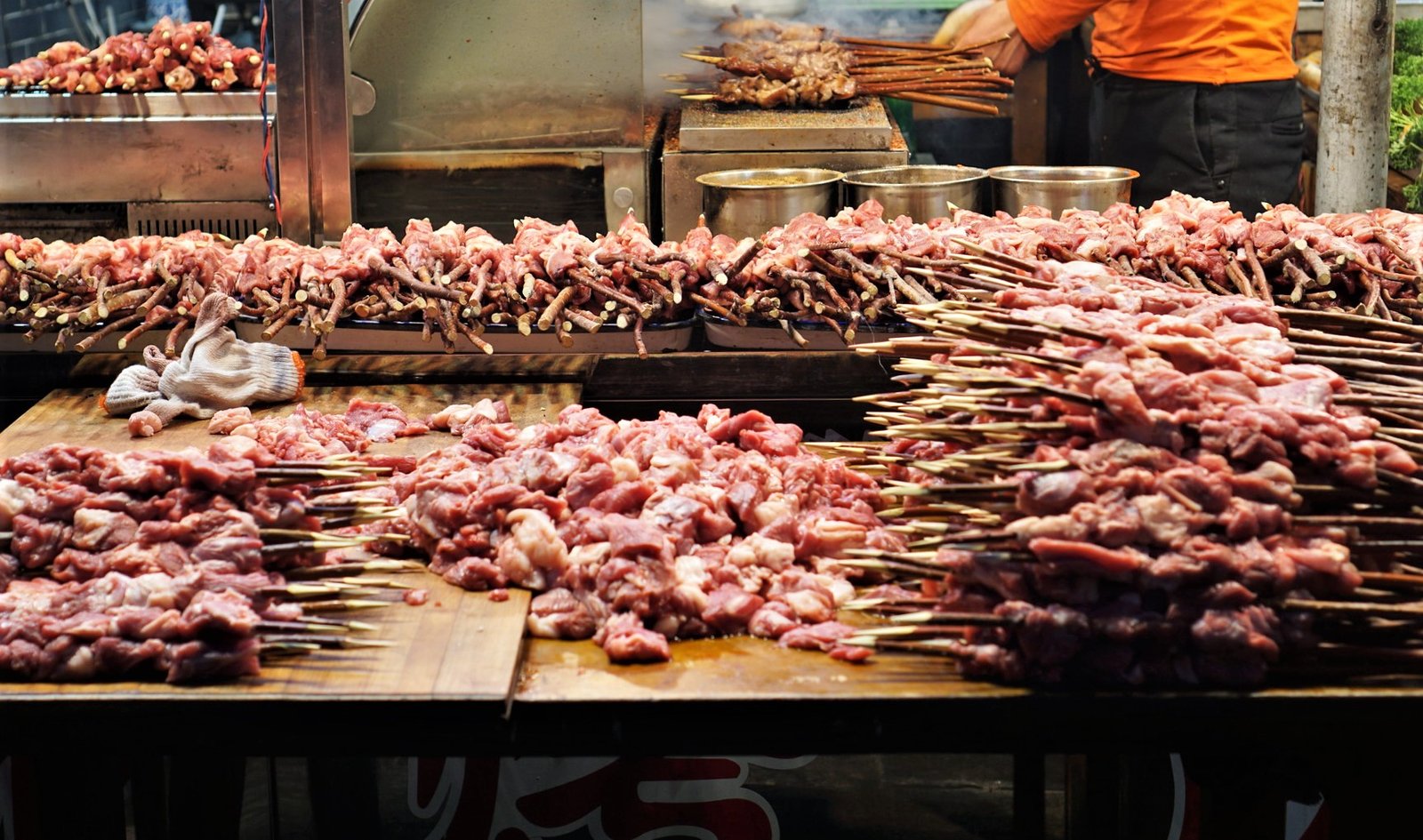

Another market in Beijing on Wangfujing Street was even more exotic. Besides all the usual market offerings such as seafood, barbeque corn, crab on a stick, vegetable pancakes, and meat dumplings, there were rows of vendors offering snake meat, deep-fried scorpions, water beetles, and various bugs on skewers.
We stared at the creepy skewers and then at each other.
“This is just a touristy thing…” Victor said, his voice trailing off, “I doubt the locals actually eat this.”
And just then, one of the vendors, as if aware of this prevalent attitude among the watching crowd, popped a fried bug into his mouth.
“Ok,” I said confidently. “I am going for it!”
We paid for one skewer of scorpions, which would have looked like tiny lobsters if it wasn’t for the little bug legs and the characteristic segmented curvy tail. Victor was holding an iPhone up to his face to record what could easily be my “Fear Factor” audition, but I could see his incredulous grimace of disgust behind the phone. I popped one bug into my mouth quickly, fearing that I would lose my nerve if I waited any longer. Surprisingly enough, it wasn’t terrible at all. All I tasted was the bug exoskeleton, it was completely empty inside, as all the insides probably dissipated in the high-heat preparation. It tasted simply like a well-seasoned deep-fried chicken skin, which is what I told Victor. I ate another one enthusiastically to show him that yes, in fact, it was palatable and maybe even pretty good. I saw other tourists watching me with the same incredulous expression Victor initially had, so I gave them a thumbs-up and popped the last scorpion into my mouth.
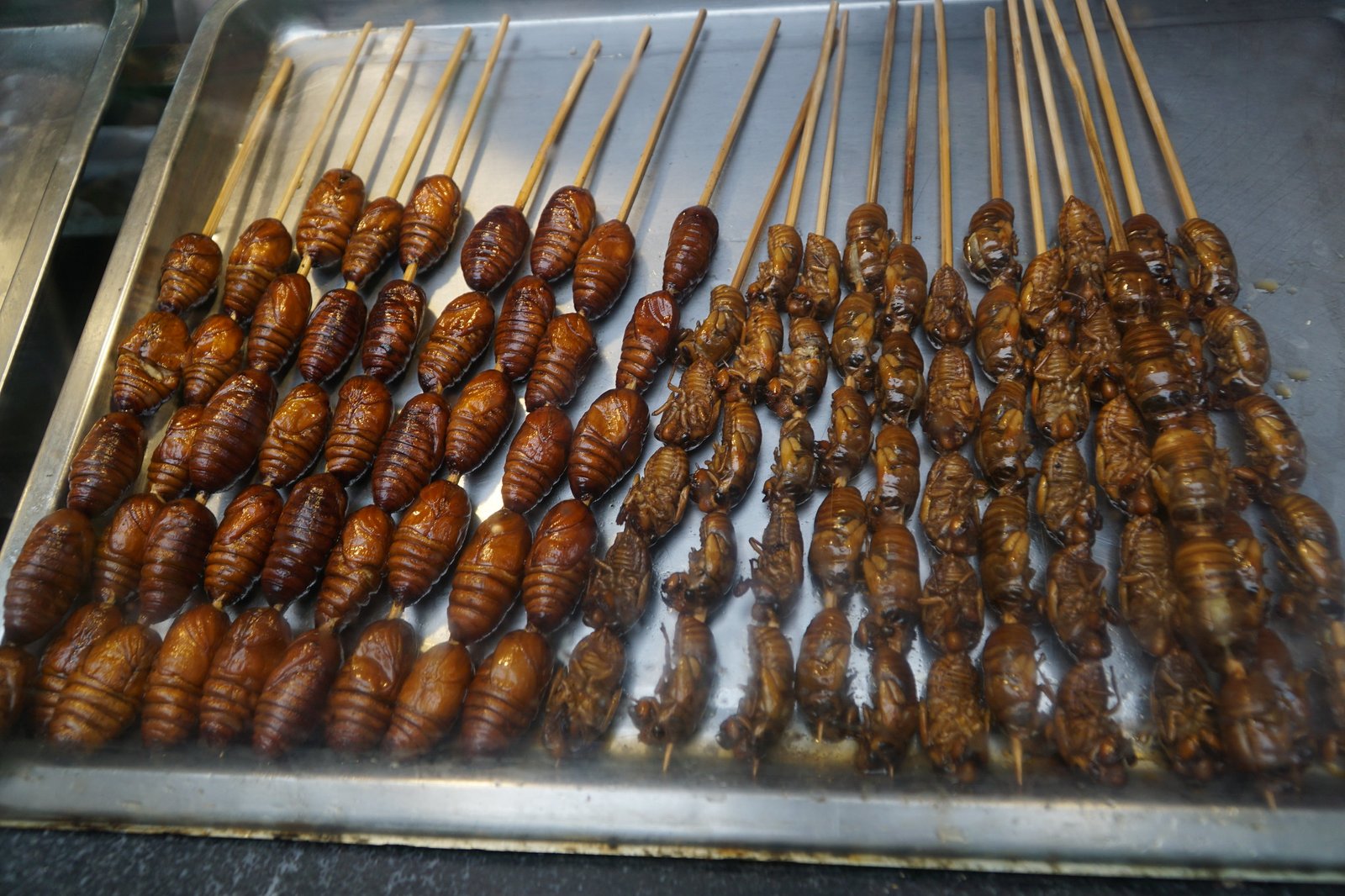

I turned back to see Victor with his mouth open as if he just stopped himself from saying something.
“What?” I asked, chewing the scorpion.
“Well… I think I just convinced myself to maybe try the last one… but you just finished them all… It’s ok, don’t worry.”
I apologized and offered to buy another skewer, but he refused and said that it was probably for the best. We both laughed about the fact that he went from absolute disgust all the way to “ready to try one” in three scorpions flat.
Our trip to China was only 9 days, not nearly enough to see everything and to try everything even in the three cities we visited, Beijing, Xi’an, and Shanghai. Eventually, I hope we will make our way back to explore other bustling cities, the serene rural countryside, the natural beauty of national parks, and all the delicacies China still has to offer.
